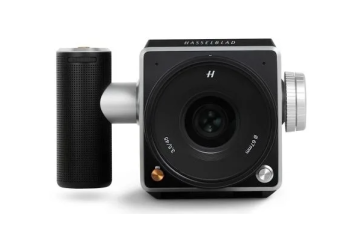In today’s digital age, voice-activated assistants have become integral parts of our lives, revolutionizing the way we interact with technology. These AI-powered virtual assistants, including Amazon Alexa, Google Assistant, and Apple Siri, offer a seamless and intuitive way to perform tasks, access information, and control smart devices using natural language commands. Let’s delve deeper into the unique features and benefits of each of these leading voice-activated assistants.
Amazon Alexa: Leading the Market
Features and Capabilities
Amazon Alexa, introduced in 2014, has quickly risen to prominence, dominating the market for voice-activated assistants. Alexa boasts a wide range of features and capabilities, including voice recognition, natural language understanding, and integration with thousands of third-party applications and services.
Integration with Smart Devices
One of Alexa’s key strengths lies in its extensive compatibility with smart home devices. Users can control lights, thermostats, security cameras, and other connected devices with simple voice commands, making home automation effortless and convenient.
Alexa Skills and Customization
Furthermore, Alexa offers a vast library of “skills,” which are essentially voice-activated apps that extend its functionality. From ordering food to playing games and accessing news updates, users can personalize their Alexa experience by enabling skills that cater to their specific needs and interests.
Google Assistant: The Power of AI
Natural Language Processing
Google Assistant, powered by advanced artificial intelligence algorithms, excels in natural language processing, allowing for more conversational interactions. Its ability to understand context and provide relevant responses sets it apart from other voice assistants.
Personalization and Context Awareness
Moreover, Google Assistant leverages data from various Google services, such as Gmail, Calendar, and Maps, to offer personalized assistance based on the user’s preferences, location, and past behavior. This contextual awareness enhances the overall user experience and makes interactions more intuitive.
Google Home Ecosystem
Google Assistant seamlessly integrates with the Google Home ecosystem, including smart speakers, displays, and Chromecast devices. This interconnected ecosystem enables users to control their smart home devices, stream media content, and access information across multiple devices with ease.
Apple Siri: The Pioneer in Voice Recognition
Evolution of Siri
As one of the first voice-activated assistants to gain widespread adoption, Apple Siri has played a significant role in popularizing voice recognition technology. Over the years, Siri has undergone significant improvements in terms of accuracy, responsiveness, and natural language understanding.
Apple Ecosystem Integration
Siri is deeply integrated into the Apple ecosystem, allowing users to access its features across various devices, including iPhones, iPads, Macs, Apple Watches, and HomePods. This seamless integration enables users to perform tasks and access information seamlessly across different Apple devices.
Privacy and Security Concerns
However, Apple’s strict emphasis on user privacy and data security sets Siri apart from its competitors. Unlike some other voice assistants, Siri processes user data locally on the device whenever possible, minimizing the risk of data breaches and unauthorized access.
Comparative Analysis: Alexa vs. Google Assistant vs. Siri
Performance and Accuracy
In terms of performance and accuracy, Google Assistant often outperforms its rivals, thanks to Google’s vast knowledge graph and sophisticated AI algorithms. However, Alexa and Siri continue to improve their accuracy through machine learning and user feedback mechanisms.
User Interface and Experience
When it comes to user interface and experience, preferences may vary depending on individual user preferences and familiarity with each platform. While some users prefer Alexa’s straightforward interface and customizable skills, others may prefer Google Assistant’s conversational style or Siri’s seamless integration with the Apple ecosystem.
Compatibility and Integration
In terms of compatibility and integration with third-party devices and services, Amazon Alexa boasts the widest range of supported devices and skills. However, Google Assistant and Siri are catching up, with an increasing number of compatible devices and integrations being added over time.
Benefits of Voice-Activated Assistants
Convenience and Time-Saving
One of the primary benefits of voice-activated assistants is the convenience they offer in performing tasks hands-free. Whether it’s setting reminders, sending messages, or controlling smart home devices, users can accomplish various tasks with simple voice commands, saving time and effort.
Accessibility for Users with Disabilities
Voice-activated assistants also play a crucial role in enhancing accessibility for users with disabilities, allowing them to interact with technology more independently. Voice commands provide an alternative input method for individuals with mobility impairments or visual impairments, enabling greater autonomy and inclusion.
Home Automation and Smart Living
Furthermore, voice-activated assistants facilitate home automation and smart living by enabling seamless control of connected devices. From adjusting lighting and temperature to locking doors and playing music, users can transform their homes into intelligent, interconnected spaces with the help of these assistants.
Challenges and Limitations
Privacy and Data Security Risks
Despite their numerous benefits, voice-activated assistants raise concerns about privacy and data security. Issues such as unauthorized access to sensitive information, accidental activation, and potential misuse of voice data highlight the need for robust privacy safeguards and transparent data handling practices.
Language and Cultural Barriers
Another challenge faced by voice-activated assistants is the need to support diverse languages and dialects to cater to a global audience effectively. Additionally, cultural differences in language usage and context pose challenges for accurate speech recognition and interpretation.
Technical Glitches and Misinterpretations
Furthermore, voice-activated assistants are susceptible to technical glitches and misinterpretations, leading to errors in speech recognition and response generation. Improving the accuracy and reliability of these assistants requires ongoing advancements in AI and natural language processing technologies.
Future Trends and Innovations
Advancements in Natural Language Processing
The future of voice-activated assistants lies in advancements in natural language processing, enabling more human-like interactions and deeper understanding of user intent. As AI technologies continue to evolve, voice assistants will become increasingly adept at understanding context, emotions, and nuances in speech.
Expansion into New Domains
Voice-activated assistants are poised to expand into new domains beyond traditional consumer applications. From healthcare and education to business and automotive sectors, voice assistants have the potential to revolutionize various industries by offering personalized, context-aware assistance.
Integration with Augmented Reality and Virtual Reality
Furthermore, the integration of voice-activated assistants with augmented reality (AR) and virtual reality (VR) technologies will unlock new possibilities for immersive and interactive experiences. Imagine using voice commands to navigate virtual environments, interact with virtual objects, and access information hands-free in AR and VR applications.
Conclusion
In conclusion, voice-activated assistants such as Amazon Alexa, Google Assistant, and Apple Siri have transformed the way we interact with technology, offering unparalleled convenience, accessibility, and personalization. While each assistant has its unique strengths and capabilities, they all share the common goal of making our lives easier and more connected. As AI continues to advance, we can expect voice assistants to become even more intelligent, intuitive, and integrated into our daily routines.

FAQs After The Conclusion
- Are voice-activated assistants always listening?
- Voice-activated assistants are designed to listen for specific wake words or phrases, such as “Alexa,” “Hey Google,” or “Hey Siri,” to activate. They only start processing and recording audio data after detecting the wake word, ensuring privacy and minimizing unintended recordings.
- Can voice-activated assistants understand different accents and languages?
- Most voice-activated assistants are capable of understanding a wide range of accents and languages to varying degrees. However, accuracy may vary depending on the complexity of the accent or dialect and the assistant’s language support.
- How do voice-activated assistants handle privacy and data security?
- Voice-activated assistants prioritize user privacy and data security by implementing encryption, anonymization, and other measures to protect sensitive information. Additionally, users have control over their data and can review or delete recordings as needed.
- Can voice-activated assistants perform tasks offline?
- While some basic tasks may be performed offline, such as setting alarms or timers, most voice-activated assistants require an internet connection to access cloud-based services and perform complex tasks like web searches or accessing third-party apps.
- How do voice-activated assistants learn and improve over time?
- Voice-activated assistants employ machine learning algorithms to analyze user interactions, feedback, and data patterns, enabling them to learn and improve over time. This iterative learning process helps enhance accuracy, responsiveness, and user satisfaction.
- Are there any ethical concerns surrounding the use of voice-activated assistants?
- Ethical concerns surrounding voice-activated assistants include issues related to privacy, data security, algorithmic bias, and potential misuse of personal information. It’s essential for developers and policymakers to address these concerns and ensure responsible use of AI technologies.
- Can voice-activated assistants be hacked or exploited?
- While voice-activated assistants employ various security measures to protect against hacking and exploitation, they may still be vulnerable to security breaches and vulnerabilities. Users should regularly update their devices, use strong passwords, and follow best practices for securing their smart home devices.
- What are some upcoming innovations in voice technology?
- Upcoming innovations in voice technology include improvements in natural language understanding, emotion recognition, and multi-modal interactions. Additionally, advancements in AI, AR, and VR integration are expected to expand the capabilities and applications of voice-activated assistants in the future.



![Top 10 Smart Home Devices of [Current Year]: Reviews and Comparisons](https://digital-electron.com/wp-content/uploads/2024/02/image-42-350x250.png)










